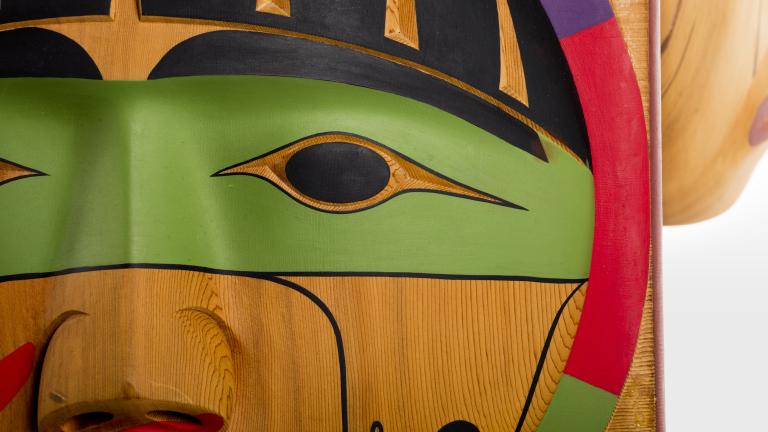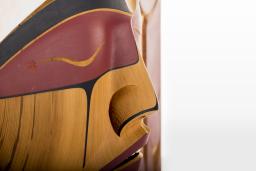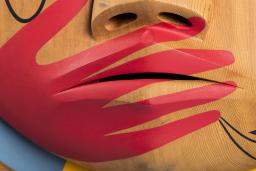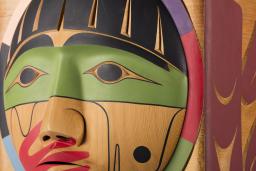Since the publication of the Truth and Reconciliation Commission of Canada’s final report in 2015, more and more Canadians seem focused on the idea of reconciliation.
Why reconciliation? Why now?
By Karine Duhamel
Published: June 15, 2016
Tags:

Photo: CMHR, Aaron Cohen
Story text
But, despite the popularity of this concept, many people are still asking, “Why reconciliation? Why now?” For many Indigenous people, the answer is self‐evident: they understand the history of dispossession, of greed and of manipulation that has forever altered the course of their nations. But for others, there is a continuing lack of awareness of Indigenous histories.
The reality is that there is no simple way to explain centuries of historical injustice, just as there is no way to provide a simple cause‐and‐effect progression of how each violation helped pave the way to another. The loss of land and the assault on culture leading to the birth of the residential school system, further losses of communal property rights, the “sixties scoop,” the continuing apprehension of Indigenous children, the crisis of missing and murdered Indigenous women and the erosion of treaty rights – these simple descriptors provide only a glimpse into a past with thousands of stories and thousands of heartaches.
And so, when people ask, “Why reconciliation?” the answer is both complex, yet remarkably simple: while most Canadians may not have personally negotiated the treaties, administered the schools or taken the land, reconciliation is a collective responsibility and one that all Canadians share, regardless of background or outlook.
Reconciliation is not merely one way forward – it is, at this critical juncture, the only way forward.
Why? First, the eyes of the world are on us, and as Canadians, we need to live up to our own hype. Since endorsing the United Nations Declaration on the Rights of Indigenous Peoples in 2010, Canada now has had a moral responsibility to articulate its principles, in practice. Now that the Canadian government has more recently become a full supporter of the document, this is perhaps truer than ever. If Canadians are to tell the world that ours is a just, a free and a democratic society, then we need to address the concerns of our country’s original inhabitants.
Secondly, rehabilitating the future means remembering the past. The ongoing denial of the historical injustices lived by Indigenous peoples is a crucial obstacle in imagining the way forward. Given the growth of Indigenous urban populations in Canada which includes nearly half a million people under the age of 20, this future must begin now. Indigenous youth, both urban and reserve‐based, must see that this country will provide a future. Only in this way can the legacies of colonialism truly begin to be addressed.
One way to put thought to action is to re‐imagine reconciliation as a process, rather than an endpoint. In other words, reconciliation is not only about what we do, but it is about how we do it. This idea of process is necessarily forward‐thinking: while the process of reconciliation demands that Canadians take some responsibility for the past, it also extends an invitation into a shared future, one that the Truth and Reconciliation Commission has discussed as a new way of life. This new way of life includes an acknowledgment of the past as well as building a future filled with necessary social, political and economic change.
And so, when people ask “Why reconciliation? Why now?”, the answer is that the responsibility belongs to us all. In the words of Indigenous poet, activist and filmmaker Rebecca Tababodong, “And you will cry and cry and cry/ because we can never be the same again./ But we will cry with you/ and we will see ourselves in this huge mess/ and we will gently whisper the circle back/ and it will be old and it will be new.”*
* Rebecca Tababodong, “Reconciliation” in Nation to Nation: Aboriginal Sovereignty and the Future of Canada edited by John Bird, Lorrain Land and Murray MacAdam (Toronto: Irwin Publishing, 2002): xi‐xii.
Dive Deeper
Reconciliation: A movement of hope or a movement of guilt?
By Karine Duhamel
In Why reconciliation? Why now? I talked about the idea of reconciliation as an invitation to a new and shared future and as a pathway towards a good life, both for Indigenous people and for other Canadians.

The nuts and bolts of reconciliation
By Karine Duhamel
As a child, I often visited museums. I was lucky to be able to travel with my family, and to visit interpretive spaces across the country.

Truth and reconciliation: What’s next?
By Karine Duhamel
This article series has focused on the way we present Indigenous content within the Museum and how we are approaching reconciliation.

Suggested citation
Suggested citation : Karine Duhamel. “Why reconciliation? Why now?.” Canadian Museum for Human Rights. Published June 15, 2016. https://humanrights.ca/story/why-reconciliation-why-now